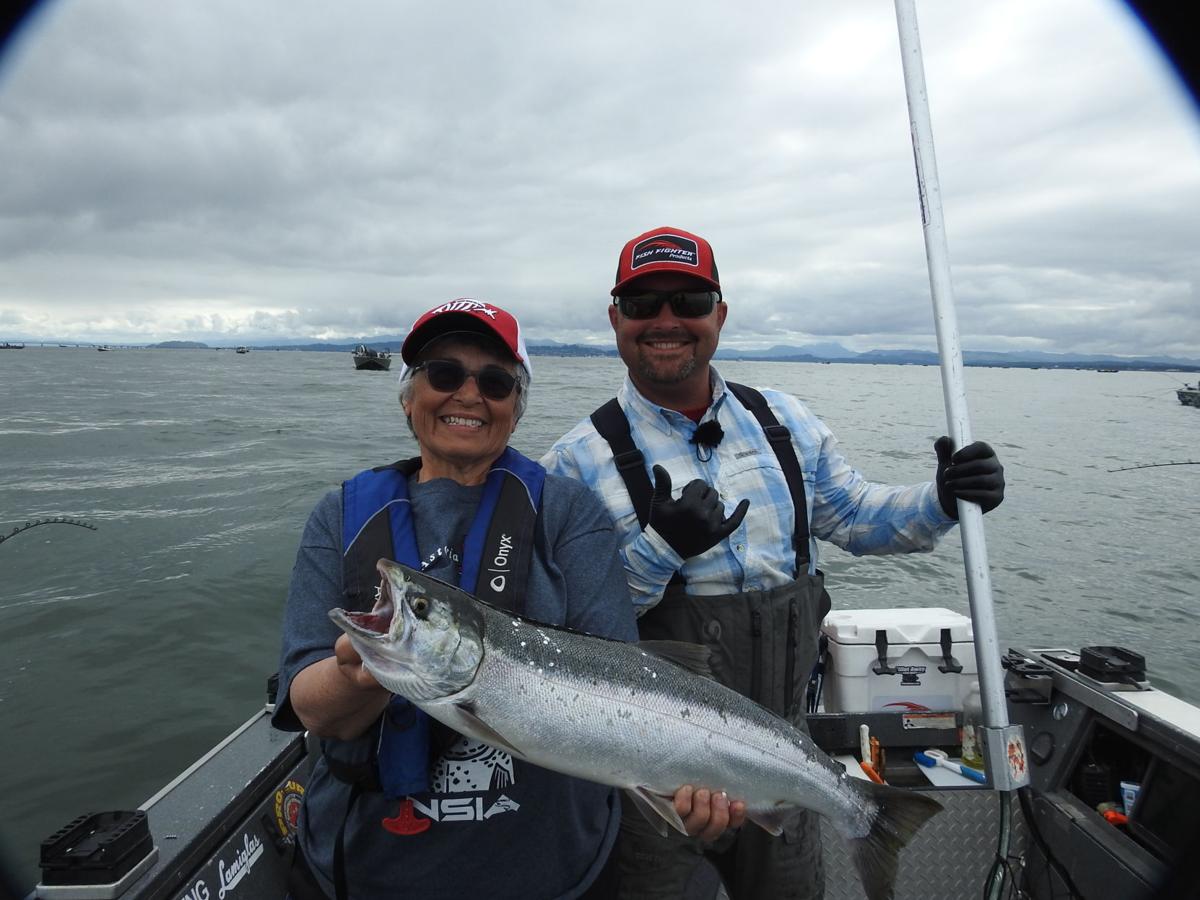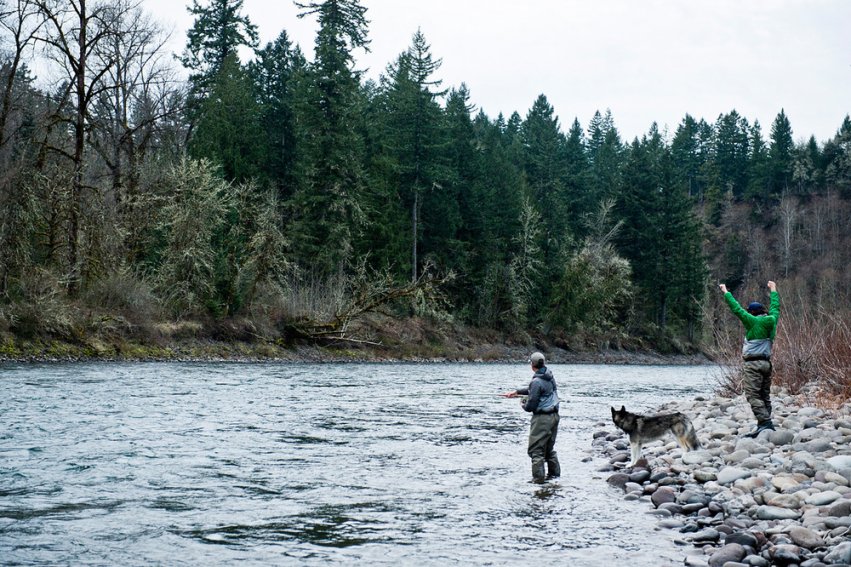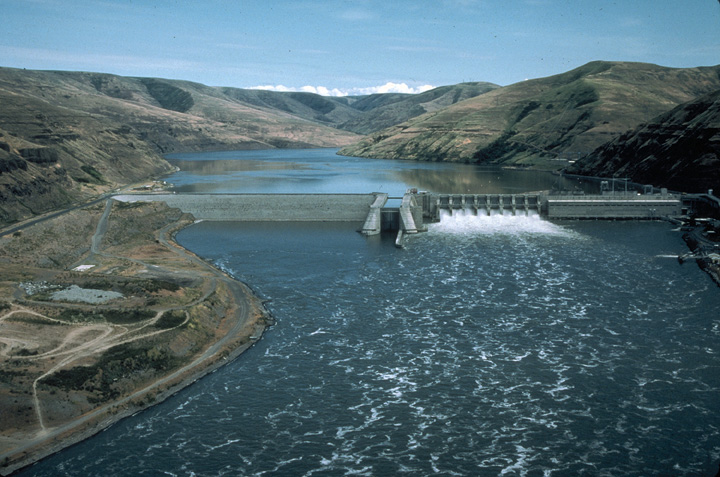
How Stevie Parsons Became a Fisherwoman and How You Can Too
September 24, 2020
Steelheaders Show Overwhelming Support for New Broodstock Program at Clackamas Hatchery
October 6, 2020Columbia River Salmon Plan Confined by Outdated Congressional Authorization
The Solution to Salmon Recovery Depends on the Courts, Congress and You
By Betsy Emery, Advocacy and Campaign Manager
September 29, 2020T he day we’ve been expecting has arrived. The Bonneville Power Administration, Army Corps of Engineers, and Bureau of Reclamation signed their Records of Decision about how they plan to manage the Columbia River Hydrosystem for the next 50 years. The federal agencies cemented their decision to implement a slightly revised version of what was supposed to be a temporary management tool, the flexible spill agreement, despite universal agreement that it was inadequate as a long term policy when it was implemented in 2019.
The federal agencies have been in a 30-year cycle of producing hydrosystem management plans, only to have the courts deem those plans illegal for jeopardizing salmon populations with further risk of extinction. This is the fifth court-ordered plan the agencies have been required to produce and it is surely headed toward litigation now that they’ve decided to implement it.
In 2016, the court required the federal agencies to go back to the drawing board, forcing them to develop a new Environmental Impact Statement (EIS) to assess a variety of management options for the river system, including breaching the four lower Snake River dams. Although the EIS concluded that breaching the lower Snake River dams is the only management option that would begin recovering Columbia and Snake river wild salmon and steelhead populations from imminent risk of extinction, they didn’t select this alternative in their Records of Decision.
Despite being court-mandated to develop a plan that prioritizes protecting salmon and steelhead, the co-lead agencies write in the Executive Summary that they “identified a Preferred Alternative that seeks to achieve a reasonable balance of multiple river resource needs and co-lead agency missions”.
In the Executive Summary, the co-lead agencies described that they couldn’t breach the lower Snake River dams because it, “would not allow the Corps to operate and maintain the dams for their other congressionally authorized purposes of navigation, hydropower, recreation, and water supply.”
Although the agencies have been planning for how best to protect salmon and steelhead for decades through the National Environmental Protection Act process, they pointed to Congress, instead of themselves, as the group in charge of whether we will have abundant salmon in our future. The co-lead agencies state in the very first page of the Executive Summary that the “EIS will not end the debate about the future management of the Columbia River System…” and further describe that “new congressional authority and associated appropriations would be required to implement the dam breaching measures evaluated in the EIS.”
Congress can make this choice through new federal legislation that authorizes restoring a free-flowing lower Snake River and addresses other related issues like irrigation, grain transportation, and renewable energy production.
Instead, the agencies suggested that a regional approach is necessary to recover salmon. They described their interest in participating “in a regional forum focused on rebuilding salmon and steelhead runs and are hopeful that this EIS will provide a useful foundation of information as we work together on a shared vision for abundant salmon and steelhead and a clean, reliable, and affordable energy future for the Northwest.”
Oregon Governor Kate Brown shared this vision for a regional forum in her comments on the EIS, describing the need for a “formal partnership with the federal lead agencies, National Oceanic and Atmospheric Administration’s National Marine Fisheries Service, and the federally recognized tribal governments.” She outlined the need for “meaningful engagement with and input from the public and others who depend on the Columbia River System… a collaborative approach to comprehensive, integrated solutions for salmon management with full consideration of energy, agriculture, transportation, recreation, and other community needs.”
While this EIS heads toward litigation, our window to actually recover these species is beginning to close. As this Record of Decision is implemented, salmon returns will improve minimally, and we will continue to bear the brunt of poor fishing seasons.
While the litigation process plays out in the courts, we need to build on the breadcrumbs that the federal agencies left in the EIS. Now, more than ever, it’s increasingly clear that the people of the northwest have the ability to make change. Instead of focusing our attention on federal agencies, we need to pivot our attention toward our congressional delegation. We need our Steelheaders community to help our Congressionals understand that they have our support in using a regional process to find a comprehensive solution to this ongoing conflict.
There is momentum on this front and we need your help to gain ground. Oregon, Washington, and Idaho governors are invested in finding a solution. Conservation organizations and energy leaders are starting to work together to find compromises that work for the fish and our communities.
We have a chance to take this issue directly to our leaders, instead of getting pushed down under the weight of red tape and agency missions.
We can’t do this without you. We need everyone to lend a hand if we are going to get our elected representatives to take meaningful action on this issue.
Take two minutes and email your congressional representatives- urge them to support a regional process to recover our salmon in the Columbia River Basin before it's too late.




